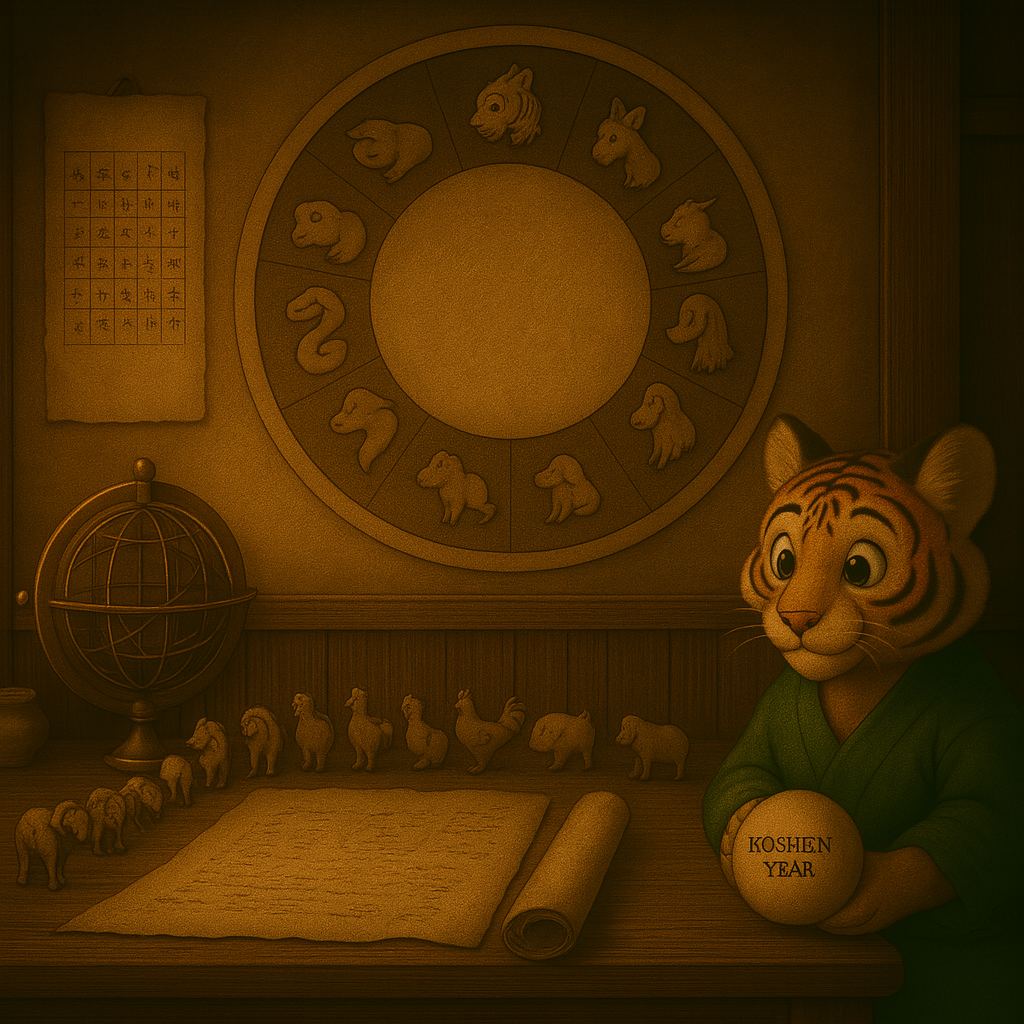Ever wondered why Japan’s most famous baseball stadium is named “Kōshien”?
Or what makes people say, “He was born in a very powerful year”?
In this article, we’ll unravel the deeper layers of the Japanese zodiac system—by diving into the concepts of “Kōshi”, the sexagenary cycle, and the rare and mysterious “Gogō no Tora ‘Five-Yellow Tiger’ “ year.
Index
🧮 The Sexagenary Cycle: More Than Just 12 Animals
Japan’s zodiac isn’t only about the 12 animals. It also includes 10 elements “called ‘Jikkan’ or 十干” like Wood, Fire, and Earth—combined with the 12 animals to create a 60-year calendar cycle called the “Eto Kanreki ‘干支還暦‘ “.
Each year gets a unique combination:
- 甲子 “Kinoe-Ne” = Wood + Rat
- 丙午 “Hinoe-Uma” = Fire + Horse
- 壬辰 “Mizunoe-Tatsu” = Water + Dragon
This system was used in ancient Chinese and Japanese calendars to mark years, months, and even hours. It’s complex—but it gave rise to many names and traditions we still use today.
🏟️ So Why Is It Called “Kōshien”?
Kōshien Stadium “甲子園球場”, opened in 1924, was named after the year 甲子 “Kōshi” in the sexagenary cycle.
Why 甲子?
It was considered an auspicious year—the beginning of a new 60-year cycle. Naming the stadium “Kōshien” was a way to celebrate fresh starts and national pride as Japan modernized during the Taishō era.
Since then, “Kōshien” has become a symbol of dreams, youth, and competition—especially in the context of high school baseball.
🐯 What’s the Deal with the “Five-Yellow Tiger”?
You might hear people whisper with awe:
“That person was born in a Five-Yellow Tiger year…”
But what does that mean?
The Five-Yellow Tiger “五黄の寅” is a rare and powerful combination rooted in two ancient systems:
- The Tiger “寅” is the 3rd animal in the Japanese zodiac “Eto”.
- The other half comes from Kyūsei Kigaku “九星気学”—a traditional system of astrology developed from Chinese cosmology and Yin-Yang theory, introduced to Japan during the Heian period “794–1185”.
It divides the calendar into nine “stars”, each representing specific cosmic energies. Among them, the Five Yellow Star “五黄土星, go-ō dosei” is considered the most intense—symbolizing power, leadership, but also potential for chaos.
When a Tiger year aligns with the Five Yellow star, it creates a year of intensified energy—both auspicious and dangerous.
This rare combination happens only once every 36 years—most recently in 1986, 2022, and the next will be 2058.
In Japanese tradition:
- People born in this year are seen as natural leaders, bold, independent, and sometimes stubborn.
- Some families avoid childbirth in this year due to its strong energy.
- Others embrace it, believing it brings unshakable determination.
Even today, “Go-ō no Tora” is a phrase that catches attention—especially among older generations and those interested in astrology or folklore.
🧍♂️ A Personal Note: I Was Born in the Year of the Tiger
I, your blog writer, was born in the Year of the Tiger. Not just any tiger, but a rare one—the “Five-Yellow Tiger.”
Maybe that explains my bold ideas… or my love for stories filled with strength and symbolism 🐯
But more than anything, I love how the zodiac gives us stories, meaning, and a shared sense of time—something beyond calendars and clocks.
🔄 What’s Next in the Eto Series?
In Part 6, we’ll reflect on how the zodiac is still relevant today—from social media filters to your grandma’s wisdom, and how people view their birth animal in everyday life.
See you there!
P.S.
To begin with, it is said that the year of the tiger tends to produce strong-minded people of both sexes. Among them, the five yellow tigers are said to be the years in which one tends to be blessed with good fortune, so I wonder if I am lucky to have been born in such a year….
またね(Matane)!



コメント